Nvidia‘s annual tech conference was all about AI. CEO Jensen Huang began his keynote with a strategic overview of AI development, tracing Nvidia‘s journey from its early work in machine learning, computer graphics, and CUDA. He then highlighted the company’s impact on generative AI before pointing to the future evolution of agentic and physical AI. These stages of development were reflected in the company’s products, ranging from CPUs and supercomputers to data centers and robotics. GTC‘s more traditional topics and past success stories took a backseat. Even in these sidelined areas, AI set the tone.
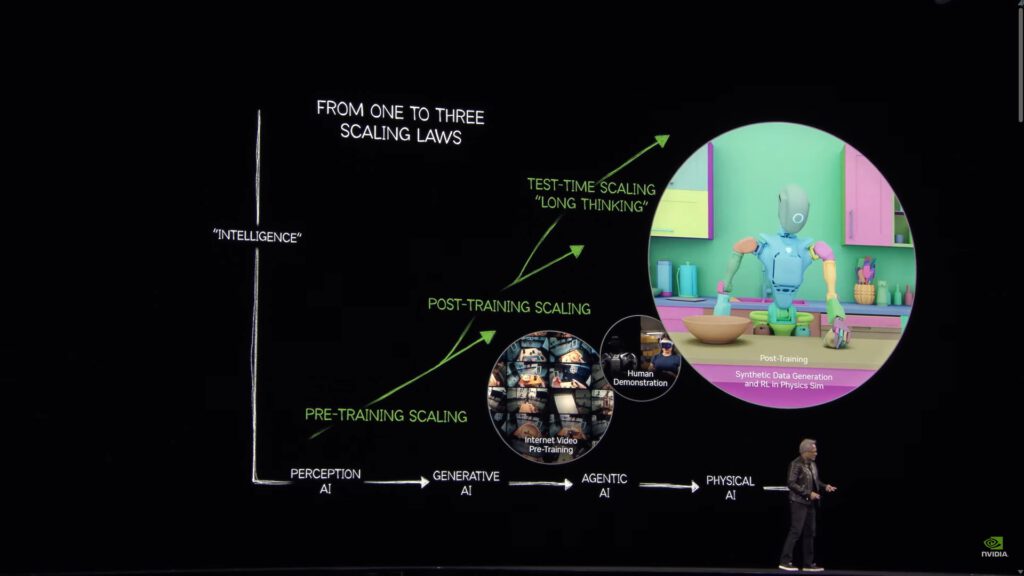
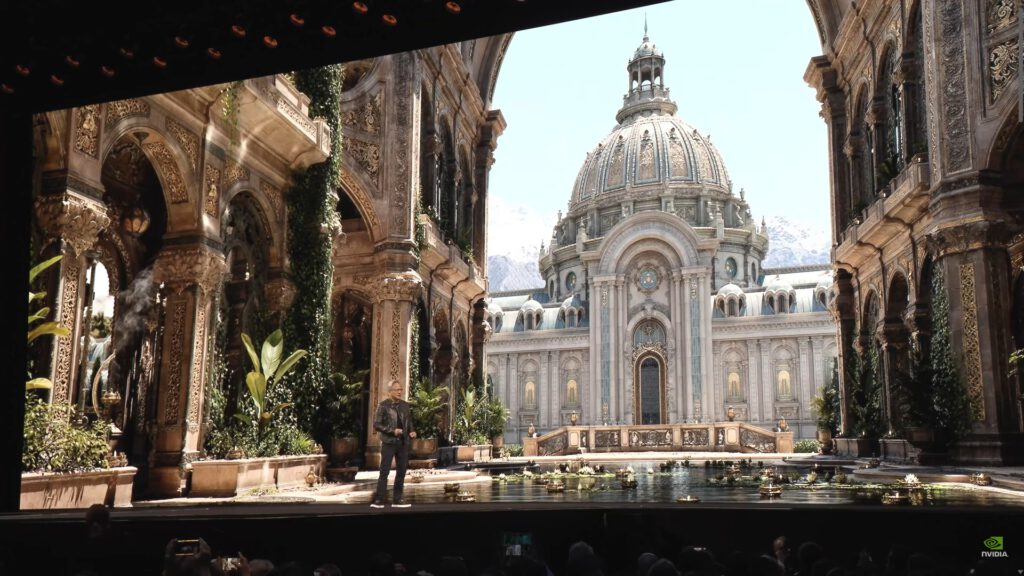
During the keynote, the massive LED back-wall showcased Nvidia‘s dominance in image generation and AI upscaling. Immersive visuals created a photorealistic journey that shifted dynamically with each scene change. The background imagery also visualized Nvidia’s product range at scale: microchips and supercomputers, graphics cards, and racks filled with mainboards—all shrinking in size and condensing over time, only to be stacked into mainframes that grew larger.
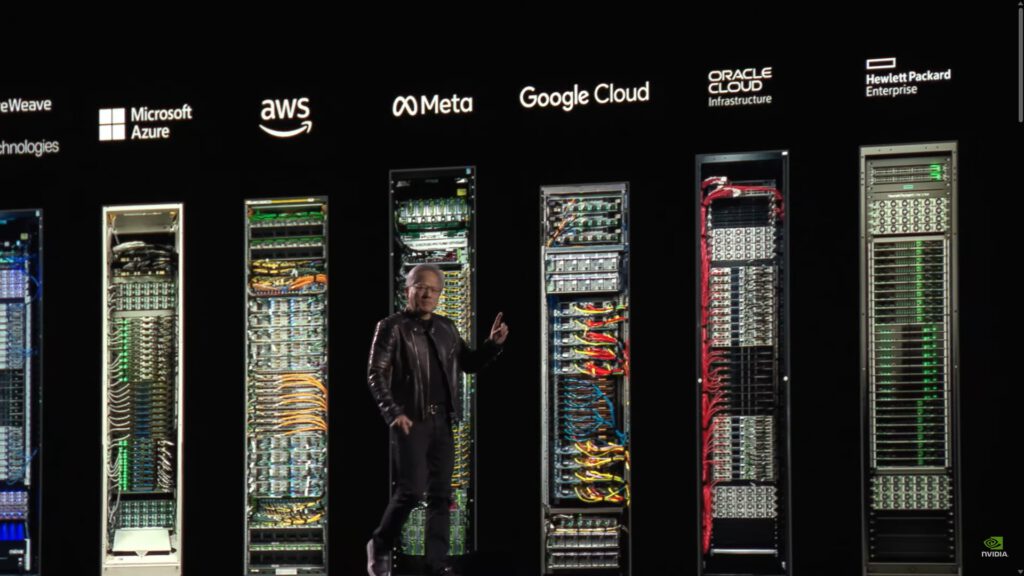
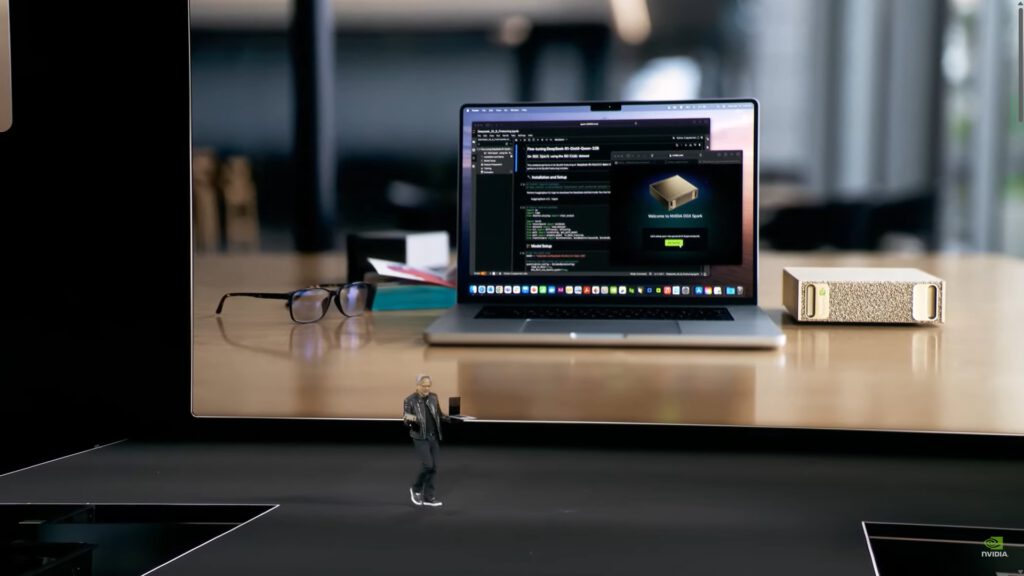
Beyond the impressive sales showcase for hardware clients and attentive investors, the latest AI product was remarkable in both scale and scope: a miniaturized supercomputer, similar in form to an Apple Mac Mini, equipped with Nvidia‘s AI models and stacks. This device can be connected to PCs for model generation and training, either locally or augmented by cloud services. Its compact size brings supercomputing to a personal level—at least for data scientists. More significantly, it signals AI’s deepening integration into computing fundamentals, raising the question whether the ship’s boat may one day become the ship itself.
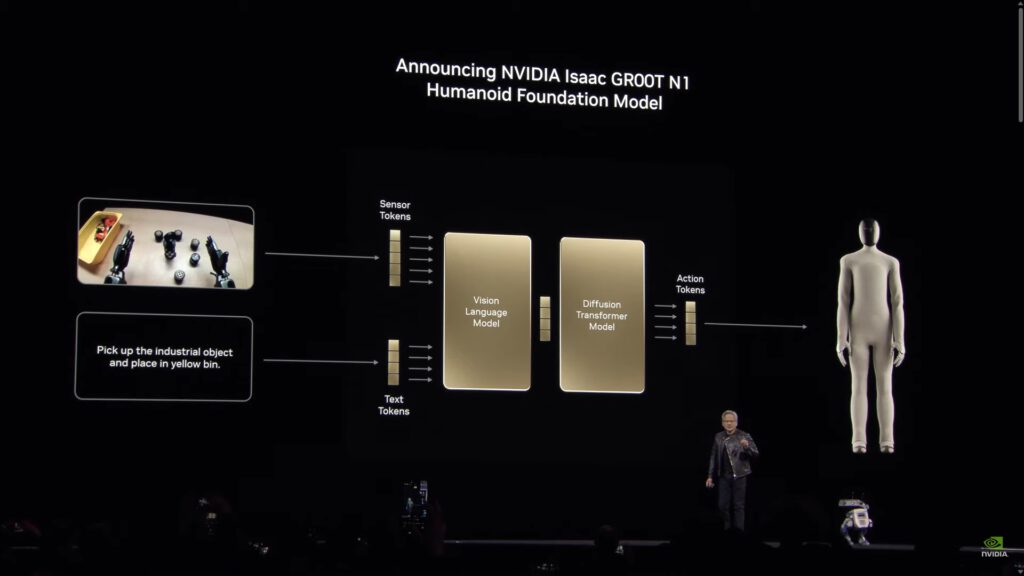
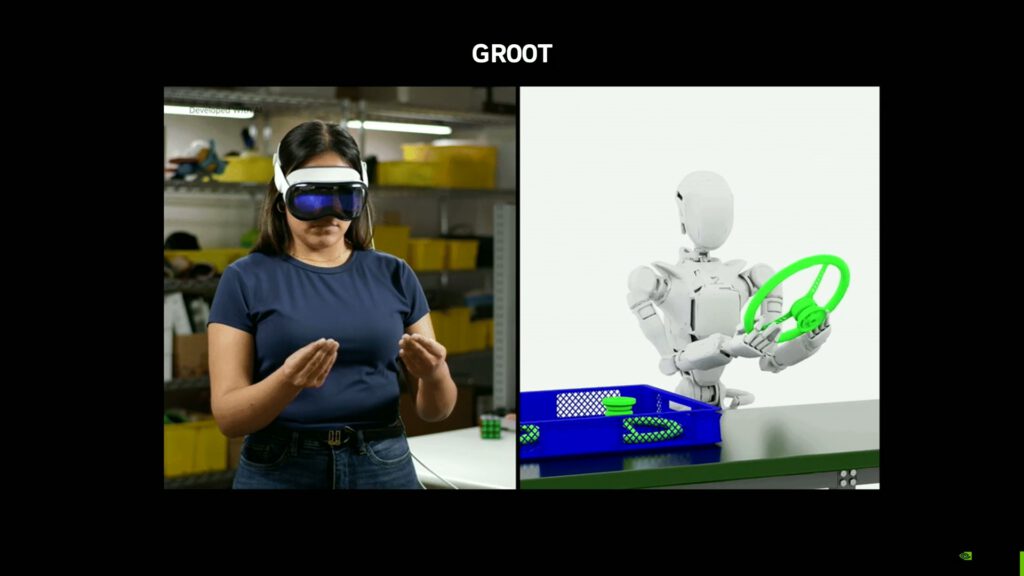
While XR and imaging took a backseat to AI promotion in the main event, the convention still featured interesting demos and lectures. Gaming played a minor role, as GDC took place at the same time, leaving industrial applications and digital twins to dominate the stage. Apple’s Vision Pro appeared in several lectures on automotive marketing, Omniverse collaborations, and as a training tool for robotics animation—use cases and scenarios reminiscent of Microsoft’s Hololens applications. Apple positions itself as a player in Nvidia‘s industrial Metaverse, albeit from the passenger seat.


VR was also featured in creative applications, such as stage design for theaters. In other creative sectors, AI’s market potential appeared promising. However, the artistic demands for AI production readiness in lecture discussions did not always align with the highly polished promotional efforts on the main stage. As AI pervades every level of computing, the question remains for clients, investors, creators, and markets alike: Will the tools Nvidia builds today shape the infrastructure of an AI-driven future through steady transformation, or will progress come in disruptive leaps?

